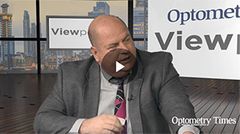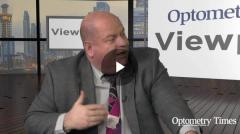
Generic vs. Branded Ophthalmic Medications
Episodes in this series

Eye care experts review differences between branded and generic medications and their relevance for patient care.
[Transcript]
Marguerite McDonald, MD, FACS: Hello and welcome to the discussion presented by Ophthalmology Times® and Optometry Times®, titled “Branded vs. Generic: You Make the Call,” focusing on dry eye. As with all therapeutic areas with prescription drug therapies, ophthalmic medications have branded and generic medications. Doctors have choices in what to prescribe. Our expert panel will address the cost question specifically, the cost difference between branded and generics, and the impact on patients, and share some personal clinical experiences. Finally, we will dive deeper into the treatment and technician roles for the management of dry eye.
I’m Dr Marguerite McDonald, a board certified ophthalmologist specializing in cornea, cataract, and refractive surgery at OCLI [Ophthalmic Consultants of Long Island] in New York. I am also a clinical professor of ophthalmology at NYU [New York University].
Today I am joined by Dr Eric Donnenfeld, who performs cataract and refractive surgery at OCLI in New York, and is also a clinical professor of ophthalmology at NYU in New York, and Dr Richard, or Rich, Mangan, an assistant professor at the University of Colorado School of Medicine in the ophthalmology department in Boulder and Aurora, Colorado.
Let’s start by talking about the landscape of generic ophthalmologic medications. Have you ever had a patient who developed a problem that you thought was related to the use of a generic medication?
Eric Donnenfeld, MD, FACS: Rich, why don’t you start?
Richard Mangan, OD, FAAO: I can say it’s happened multiple times and from different products. One that comes to mind is, I’ve had a patient where I gave them a sample of Zirgan, for example, for herpes simplex keratitis, and because of cost issues, they switched to a generic, Viroptic. The next thing you know they’re having to come to my office for multiple visits because of the ocular surface inflammation irritation it caused. That’s one example that comes to mind.
Eric Donnenfeld, MD, FACS: The literature has multiple cases, probably the most famous is the use of generic nonsteroidals in which there were a series of corneal perforations in the patients who got generic nonsteroidals. These are big problems. And the compounding issue with generic medications is when you take a patient who has a generic medication and you add dry eye, it adds a level of insult to the ocular surface that’s going to make almost all these medications problematic.
Generic medications are not a panacea. There are risks associated with them, and I think as clinicians, we have to be aware of [them and] do what’s best for the patient, specifically however, in dry eye patients who have the highest risk for having ocular problems.
Marguerite McDonald, MD, FACS: Also there is a lower bar for generic companies. The branded medications have gone through incredible testing. And not only are generic medications less scrupulously studied, there are all sorts of things that can change—the excipients, the base, the pH. And there are many generic medications that are made by 11 or more companies. So if the patient is doing fairly well on one generic, the next time they go to the store they might get one made by a different company and have a completely different outcome.
That actually happened to my dearest friend, who has glaucoma. She lives far from me. Her care is delivered by someone else, and she was switched from one generic latanoprost to another. And her excellent outcome suddenly tanked, and she was losing field and her OCT [optical coherence tomography] changed till she got back on the original generic.
Eric Donnenfeld, MD, FACS: Well, I think it’s worth discussing the difference in approval process for branded versus generic. When you have a branded medication that’s approved, you go through a multimillion dollar evaluation with phase 1, phase 2, and phase 3 trials where they’re looking really not only at the efficacy, but the safety. Safety is an enormous concern of the FDA when evaluating a new product. So the safety evaluation of these new medications is really significant. And they look at a lot of different things. If you’ve ever been involved in an FDA trial...it’s extraordinarily rigorous. They look at everything.
On the other hand, when you look at a generic medication they’re looking for bioequivalence. They don’t even look at patients. They just look to show that in a laboratory, in vitro very commonly, that the medications look very similar on paper. So you don’t know about things like particle size, pH, excipients.
Richard Mangan, OD, FAAO: Buffer capacity, all those things.
Eric Donnenfeld, MD, FACS: Exactly. They all play significant roles. There are significant differences. Now there are generic medications that are wonderful. They do a great job. The problem is, how do you decide which are good and which are not good, because the FDA doesn’t really give you guidance on which is the best medication to use, generically or not.
Marguerite McDonald, MD, FACS: That’s true.
Richard Mangan, OD, FAAO: I think for latanoprost alone there are at least 7 companies making them, and even if your patient is on a generic that happens to be pretty good that month, what’s the next bottle they’re going to get from the pharmacy a few months later, and how is that going to be different? Trust is the difficult thing with generics.
I think the main thing is consistency. We know it’s already been well studied and gone through the FDA trials and rigorous testing on things. So we usually feel good about the branded product. The thing for me is just consistency. I want to know that whatever my patient is picking up from the pharmacy is repeatable and reliable. We can’t always say that about generic products, especially when there’s more than 1 pharmacy in the game.
Marguerite McDonald, MD, FACS: As we mentioned before, the excipients, the packaging, the size of the drop that comes out, there are a host of variables and there’s really no control over them in the generic world. How about the options in the branded world for choosing formulations that are non-BAK [benzalkonium chloride] preserved, or preservative-free. Are there more options in the branded world?
Eric Donnenfeld, MD, FACS: Of course there are. The branded medications have been studied, and it’s not only about safety, it’s also about efficacy. And it’s the combination of both that really are very important. But you want to use a medication, optimally for most patients, that is used [as infrequently] as possible. If you have a medication that can be used once a day rather than twice a day, that is an enormous benefit for patients. Certain nonsteroidals are used 4 times a day generically or used once a day when you use a branded. What an advantage to the patient to use a once-a-day drop. In addition to that, you can have the advantage of using a preservative-free medication, and I think that’s really important, especially for a dry eye product like lifitegrast or like a cyclosporine, having a nonpreserved medication really plays a significant role in improving the efficacy and safety of the medication.
Newsletter
Want more insights like this? Subscribe to Optometry Times and get clinical pearls and practice tips delivered straight to your inbox.
























































.png)


